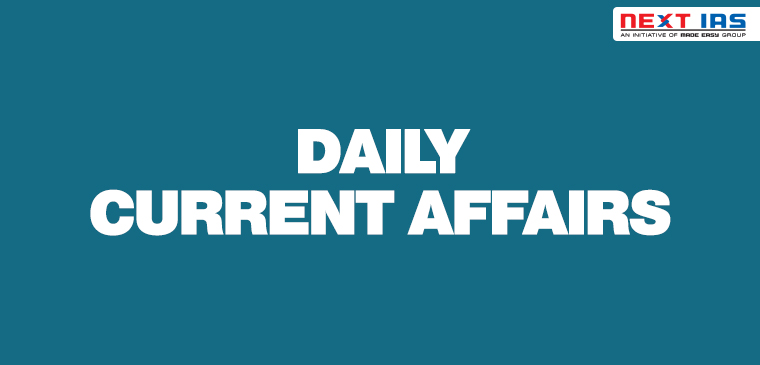
In News
Oxfam recently released a report titled, ‘Inequality Report 2021: India’s Unequal Healthcare Story’.
Key Findings
- Serious inequalities in healthcare:
- India’s low spending on public healthcare systems and focus on supporting private healthcare has led to serious inequalities in access to healthcare, especially during the Covid 19 pandemic.
- States working towards reducing inequalities:
- States that have for the past few years been reducing inequalities, such as inequalities to access to health between the general category and SC and ST populations, have less confirmed cases of Covid.
- Example, Telangana, Himachal Pradesh and Rajasthan.
- States with higher expenditure on health:
- States that have had higher GDP expenditure on health have higher recovery rates of Covid cases.
- Example, Assam, Bihar and Goa
- Discrimination and inequality faced more by lower income groups:
- Those in higher income brackets, and with access to health infrastructure, had to face less visits to hospitals and Covid centres than those belonging to lower income groups.
- People belonging to lower income groups also faced five times more discrimination on being found Covid-positive than those in higher income groups
- SC/ST Communities faced difficulty in non Covid Medical facilities:
- Over 50 per cent of people from SC and ST communities faced difficulties in accessing non-Covid medical facilities, compared to 18.2 percent of people in the ‘general’ category.
- Digital divide came to light:
- The report points out that the vaccination drive against Covid-19 ignores the country’s digital divide.
- Entering the pandemic, only 15 per cent rural households had an internet connection.
- Smartphone users in rural India were almost half of those in urban areas.
- More than 60 per cent of women across 12 states had never used the internet
- General findings:
- People in the general category performs better than the Scheduled Castes (SCs) and Scheduled Tribes (STs)
- Hindus perform better than Muslims
- The rich perform better than the poor
- Men are better off than women
- The urban population is better off than the rural population on various health indicators.
- Other Socio-economic factors:
- The literacy rate for women in the general category is 18.6 percent higher than SC women, and 27.9 percent higher than ST women.
- This means women in the general category not only have a better understanding of the health infrastructure available but also have better access.
- Female literacy rate is highest amongst Sikhs and Christians at over 80 per cent, followed by Hindus at 68.3 per cent, and Muslims at 64.3 percent
- The literacy rate for women in the general category is 18.6 percent higher than SC women, and 27.9 percent higher than ST women.
- Discrimination based on gender of Child in immunisation:
- Despite improvement in child immunisation, the rate of immunisation of girls continues to be below that of the male child.
- Immunisation of children in urban areas is more than those in rural areas.
- Immunization of SCs and STs is behind that of other caste groups.
- Antenatal care also decreased:
- Percentage of mothers who have received full antenatal care declined from 37 percent in 2005-06 to 21 percent in 2015-16.
- Full antenatal care for urban areas is close to two times that of rural areas, and immunisation among Muslims the lowest — lower than the SC/ST populations.
(Image Courtesy : IE)
Challenges
- Public sector not flourishing as much as private:
- While India has made strides in healthcare provisioning, this has been more in support of private healthcare — and not public — leaving the underprivileged at a great disadvantage.
- Medical Expenditure has been increasing manifolds:
- The average medical expenditure per hospitalisation case has tripled between 2004 and 2017, making it difficult for poorer and rural households.
- One rupee in every Rs 6 spent on hospitalisation came through borrowing; while urban households depended on savings, rural households depended on loans.
- This need to borrow further discourages the marginalised from accessing health care.
- In fact, the out-of-pocket health expenditure of 64.2 percent in India is higher than the world average of 18.2 percent.
- Government’s insurance scheme penetration is very low:
- Less than one-third of households in the country were covered by a government insurance scheme in 2015-16
- Low spending by Government on public healthcare:
- India’s low spending on public healthcare has left the poor and marginalised with two difficult options:
- suboptimal and weak public healthcare or
- expensive private healthcare.
- Exorbitant prices of healthcare have forced many to sell household assets and incur debts.
- The investment in public health infrastructure is so little that the number of beds in the country has actually come down — from 9 beds per 10,000 persons in the 2010 Human Development Report, to only 5 beds per 10,000 persons today.
- India’s low spending on public healthcare has left the poor and marginalised with two difficult options:
Way Ahead
- India needs to recognise the importance of addressing rising inequality and put in place mechanisms for its measurement.
- India needs to conduct more income/wealth surveys. This is not just about collecting wealth data twice in a decade, but also more consistently tracking the differential impact of specific policies on India’s rich and poor.
- It would, thus, be important to know the relative access that India’s rich and poor have had to life-saving vaccines.
- India’s policymakers need to understand the extent to which their actions are really benefiting India’s rich or the poor who need help most.
|
Best Model : Kerala Model
OXFAM
|
Source: IE


